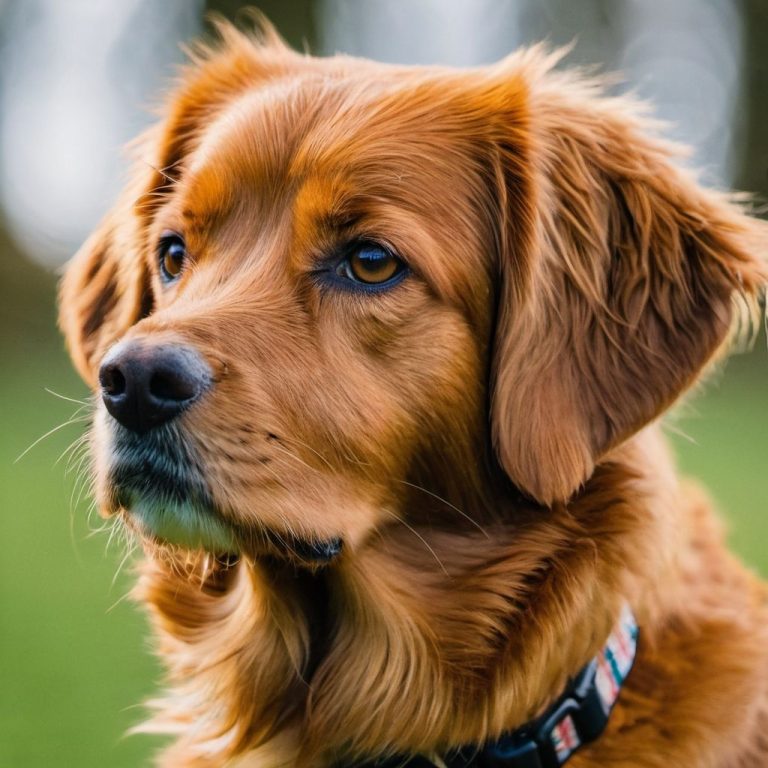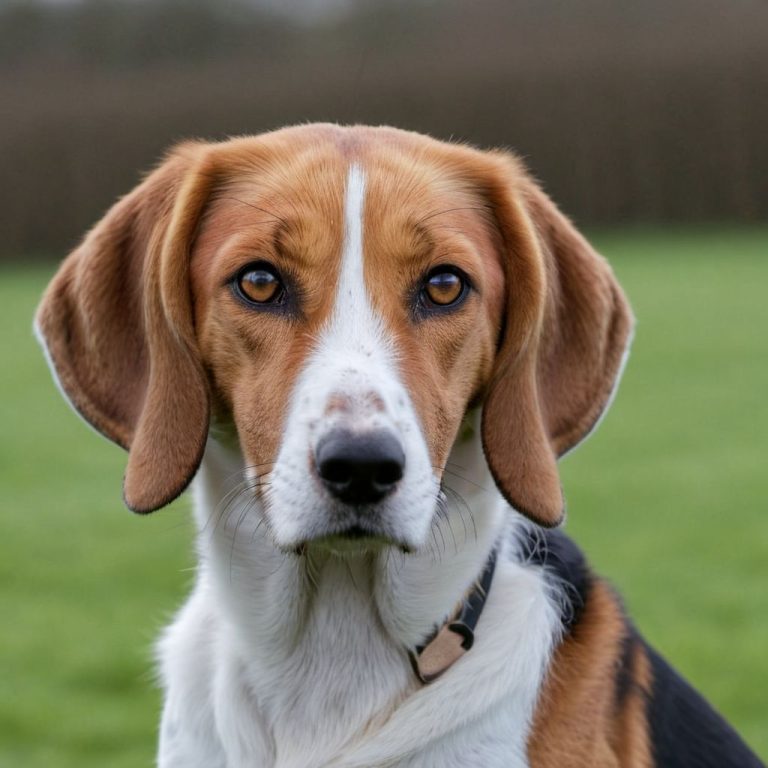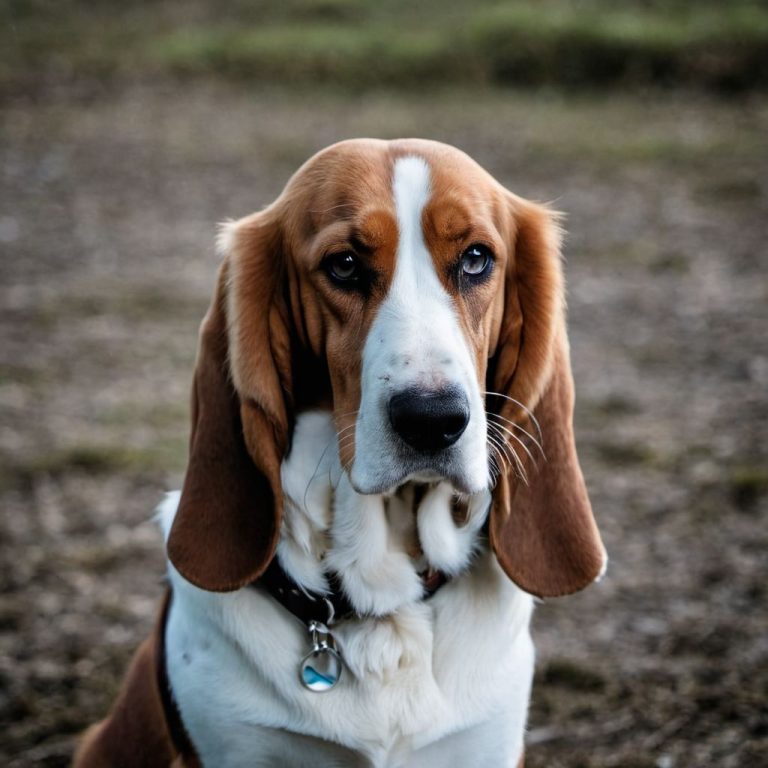BASSET BLEU DE GASCOGNE: A French Hound
Immerse yourself in the world of the Basset Bleu De Gascogne, a delightful scent hound that combines elegance with a keen hunting prowess. Characterized by its distinctive droopy ears, short legs, and a striking tricolor coat that exudes a beautiful blue-ticked pattern, this breed captures hearts with its charming appearance.

Known for its exceptional olfactory abilities, this breed has a rich history as a skilled hunter, primarily used for tracking game in the rough terrains of Gascony. Despite its hunting background, this breed adapts well to family life, showcasing a gentle and affectionate temperament. Their sociable nature makes them great with children and other pets, forming strong bonds within the household.
Uncover the unique characteristics and traits that set him apart, from its easygoing nature to its moderate exercise needs. Explore grooming tips and training techniques to ensure a happy and healthy life for your four-legged friend. Dive into the world of this enchanting breed and discover why the Basset Bleu De Gascogne is more than just a hound—it’s a loyal and loving companion.
History
This hunting dog breed originating from the Gascony region in France, has a rich history rooted in hunting and companionship. Believed to have descended from ancient French hounds, the breed’s development can be traced back to the Middle Ages when it was selectively bred for its exceptional scenting abilities and adaptability to rugged terrains.
Bred specifically for tracking small game such as rabbits and hares, this dog earned its place among the elite hunting dogs of French nobility. Its low-set, long ears and unique blue-ticked coat helped distinguish it from other hounds. The word “Basset” refers to its low stature, a characteristic that aids in scent tracking, allowing the breed to navigate dense vegetation effectively.
Over the centuries, his breed maintained its popularity as a skilled hunter, particularly in the Gascony region. However, it wasn’t until the late 19th century that standardized breeding practices were established to refine the breed’s characteristics.
Today, the Basset Bleu De Gascogne is not only valued for its hunting prowess but has also become a beloved companion in many households worldwide. Its friendly disposition, distinctive appearance, and loyalty make it a cherished member of families who appreciate both its historical significance and affectionate nature.
Personality
He is renowned for its amiable and easygoing personality. This charming hound is known to be affectionate, loyal, and sociable, making it an excellent choice for families and individuals alike. Despite its historical background as a skilled hunter, it has adapted well to domestic life, showcasing a gentle demeanor that endears it to those around.
With an affectionate nature, these dogs thrive on companionship and are generally good with children and other pets. They are known to form strong bonds with their families, and their calm temperament makes them a pleasant addition to any household. While they maintain a certain level of independence, their loyalty ensures a close connection with their human companions.
The Basset’s adaptability extends to various living environments, but they do require regular exercise to keep both their bodies and minds stimulated. Despite their somewhat laid-back appearance, they possess a playful side and enjoy engaging in activities that allow them to use
This is a delightful combination of affection, loyalty, and adaptability. Their friendly nature and unique appearance make them not only a great hunting companion but also a wonderful and loving member of the family.

Physical Characteristics
Height
- Male 13-15 inches
- Female 12-14 inches
Weight
- Male 35-40 pounds
- Female 33-38 pounds
Coat
He is characterized by its distinctive short, dense coat with a unique tricolor pattern, featuring a white background, mottled black patches, and a striking blue ticking.
Color
The main colors are:
- White background
- Mottled black patches
- Blue ticking
Eyes
He has dark, expressive eyes that contribute to its soulful and gentle appearance.
Ears
This hound is known for its long, droopy ears, a distinctive feature that contributes to its charming and unique appearance.
Tail
It has a moderately long tail that is set low, carried sabre-like, and covered with the breed’s distinctive tricolor coat.
Life Span
The average life span is around 10-14 years.
Temperament
He is known for its amiable temperament, combining affection, loyalty, and adaptability. This charming hound is generally good-natured, friendly, and sociable, making it an excellent family companion.
Despite its historical hunting background, it tends to be laid-back indoors but displays enthusiasm during outdoor activities. Their affectionate nature extends to children and other pets, fostering strong bonds within the family.
While they exhibit some independence, their loyalty ensures a close connection with their human companions. Regular exercise is important to keep them stimulated, and their distinctive appearance adds to their appeal as both a hunting partner and a loving household member.
Grooming
The Gascogne has a short, dense coat that requires moderate grooming to keep it healthy and neat. Here’s a comprehensive and brief guide to grooming this breed:
Regular brushing, at least once or twice a week, helps remove loose hair, prevents matting, and keeps the coat healthy. Occasional baths, as needed, using a mild dog shampoo, can help keep the coat clean and fresh. Be mindful not to over-bathe, as it may strip the coat of natural oils.
De Gascognes are prone to ear infections due to their long, droopy ears. Regularly check and clean their ears to prevent wax buildup and infection. Use a vet-approved ear cleaner and consult your veterinarian for guidance.
Keep their nails trimmed regularly to prevent overgrowth and discomfort. Be cautious not to cut too close to the quick.
Brush their teeth regularly to maintain good oral hygiene. Dental chews or toys can also help reduce plaque and tartar buildup.
Due to their droopy eyes, Basset may be prone to tear staining. Regularly clean the area around their eyes to prevent staining.
Training
Training him requires a patient and consistent approach, taking into account their independent nature and keen sense of smell. Here’s a comprehensive and brief guide to training this breed:
Begin socialization early to expose this hunting dog to various people, environments, and situations. This helps prevent shyness or fearfulness. Use positive reinforcement techniques such as treats, praise, and rewards. They respond well to encouragement and positive interactions.
Be consistent with commands and training routines. This breed can be independent, so clarity and consistency help them understand expectations. Teach basic commands like sit, stay, come, and heel. Start with short training sessions to keep the dog engaged and gradually increase the complexity of commands.
Establish a consistent housetraining schedule, especially during puppyhood. Use positive reinforcement for successful bathroom breaks outside. Due to their tracking instincts, leash training is crucial. Teach the dog to walk on a loose leash, and practice walking in different environments to reinforce good behavior.
They are intelligent dogs that benefit from mental stimulation. Provide puzzle toys, interactive games, and training sessions to keep their minds active. Introduce crate training gradually, creating a positive association with the crate. This helps with house training and provides a safe space for the dog.
They may bark, especially when they catch an interesting scent. Train them to respond to a “quiet” command and reward calm behavior. Consider enrolling your dog in obedience classes or working with a professional trainer, especially if you encounter challenges or want to enhance specific skills.

Exercise
He may have a laid-back appearance, but they benefit from regular exercise to maintain their health and prevent boredom.
Provide daily walks to satisfy their moderate exercise needs. They enjoy exploring scents, so walks offer mental stimulation as well. Engage in interactive play sessions to keep them physically active. Fetch, tug-of-war, or hide-and-seek are enjoyable activities for this breed.
Find a secure, fenced area for off-leash play. They have a strong sense of smell and may become easily distracted, so a safe and enclosed space is essential. Take them on hikes or nature trails. Their sturdy build and endurance make them suitable companions for outdoor activities.
Leverage their excellent sense of smell by incorporating scent-based activities. Hide treats or toys for them to find, engaging their natural hunting instincts. Consider participating in canine sports like tracking or agility. These activities not only provide physical exercise but also mental stimulation.
If your doggie enjoys water, swimming is an excellent low-impact exercise that’s gentle on their joints. Provide puzzle toys or treat-dispensing toys to keep them mentally engaged. This helps prevent boredom and stimulates their problem-solving skills.
Establish a consistent exercise routine. While they may enjoy lounging indoors, regular activity is crucial for their overall well-being. Be mindful of their moderate energy levels and avoid overly strenuous activities. Pacing the exercise routine prevents exhaustion and ensures a positive experience.
Nutrition
Provide a well-balanced and nutritionally complete diet suitable for the dog’s age, size, and activity level. Choose a high-quality commercial dog food that meets the nutritional standards set by reputable organizations. Consult with your veterinarian for recommendations.
Ensure appropriate protein content, derived from animal sources, to support muscle development and overall health. Include healthy fats, such as omega-3 and omega-6 fatty acids, for skin and coat health. Fish oil or other supplements can be considered with veterinary guidance.
Be mindful of calorie intake to prevent obesity, as they may have a tendency to gain weight. Portion control is crucial. Establish a consistent feeding schedule, typically feeding adult Bassets twice a day. Puppies may require more frequent meals.
Ensure access to fresh, clean water at all times to maintain hydration. Avoid feeding them human foods that may be harmful, including foods toxic to dogs such as chocolate, onions, and grapes.
Regularly monitor your dog’s weight and adjust their diet as needed to maintain a healthy body condition.
Health Concerns
The Basset Bleu De Gascogne is generally a healthy breed, but like all dogs, they may be prone to certain health concerns. Here’s a comprehensive and brief overview of potential health issues associated with this breed:
Ear Infections
Due to their long, droopy ears, they are susceptible to ear infections. Regular cleaning and ear care can help prevent issues.
Obesity
Bassets have a tendency to gain weight, so monitoring their diet and providing regular exercise is crucial to prevent obesity-related health issues.
Hip Dysplasia
This genetic condition can affect the hip joints, leading to arthritis and mobility issues. Regular exercise, a balanced diet, and maintaining a healthy weight can help manage the risk.
Elbow Dysplasia
Similar to hip dysplasia, elbow dysplasia is a genetic condition affecting the development of the elbow joint. Proper nutrition and exercise are essential to support joint health.
Bloat (Gastric Torsion)
Like many deep-chested breeds, may be prone to bloat. Feeding smaller, more frequent meals and avoiding vigorous exercise after meals can help reduce the risk.
Eye Conditions
Certain eye conditions, including entropion (inward rolling of eyelids) and ectropion (outward rolling of eyelids), may occur. Regular eye checks can help detect and address these issues.
Hypothyroidism
Some Bassets may be prone to hypothyroidism, a condition where the thyroid gland doesn’t produce enough hormones. Regular veterinary check-ups can help monitor thyroid function.
Intervertebral Disc Disease (IVDD)
This condition involves the spinal discs and can lead to pain and mobility issues. Maintaining a healthy weight and preventing excessive jumping can help reduce the risk.
Patellar Luxation
Patellar luxation, where the kneecap dislocates, is a concern in some Basset Bleu De Gascognes. Regular veterinary examinations can help detect and address this issue.
Cancer
As with many dog breeds, cancer can be a concern. Regular veterinary check-ups and early detection are crucial for managing and treating cancer.
Bottom Line
The Basset Bleu De Gascogne is a charming and affectionate breed known for its unique appearance and gentle temperament. To ensure their well-being, provide a balanced diet, regular exercise, and proactive veterinary care.
While they may be prone to certain health concerns, responsible ownership, early detection, and proper management can contribute to a happy and healthy life for this delightful hound.
FAQs (Frequently Asked Questions)
Q: Are they good watchdogs?
A: Yes, they have a keen sense of hearing and may alert their owners to unfamiliar sounds, making them effective watchdogs.
Q: Are they good with children and other pets?
A: Yes, Basset Bleu De Gascognes are generally good with children and other pets. Their friendly nature and sociable temperament make them adaptable to family life.
Q: Do Basset Bleu De Gascognes get along with strangers?
A: Generally, they are friendly dogs and may get along well with strangers, although individual temperament can vary.
Q: Are they suitable for apartment living?
A: While they adapt well to various living environments, Basset Bleu De Gascognes benefit from having some outdoor space. Regular walks and playtime are essential.
Q: Can Basset Bleu De Gascognes be left alone for long periods?
A: They may experience separation anxiety if left alone for extended periods. It’s advisable to provide companionship or arrange for a dog sitter if needed.
Q: Can Basset Bleu De Gascognes be trained for specific activities like tracking or agility?
A: Yes, they can excel in activities like tracking, agility, and even scent-based games, leveraging their natural hunting instincts.
Q: Are there rescue organizations or breed-specific clubs for Basset Bleu De Gascognes?
A: Yes, there are breed-specific rescue organizations and clubs that may help you find or adopt a Basset Bleu De Gascogne.
Q: How do I choose a reputable breeder for a Basset Bleu De Gascogne?
A: Look for breeders with a good reputation, who prioritize the health and well-being of the dogs. Ask for references and visit the breeder’s facilities if possible.






